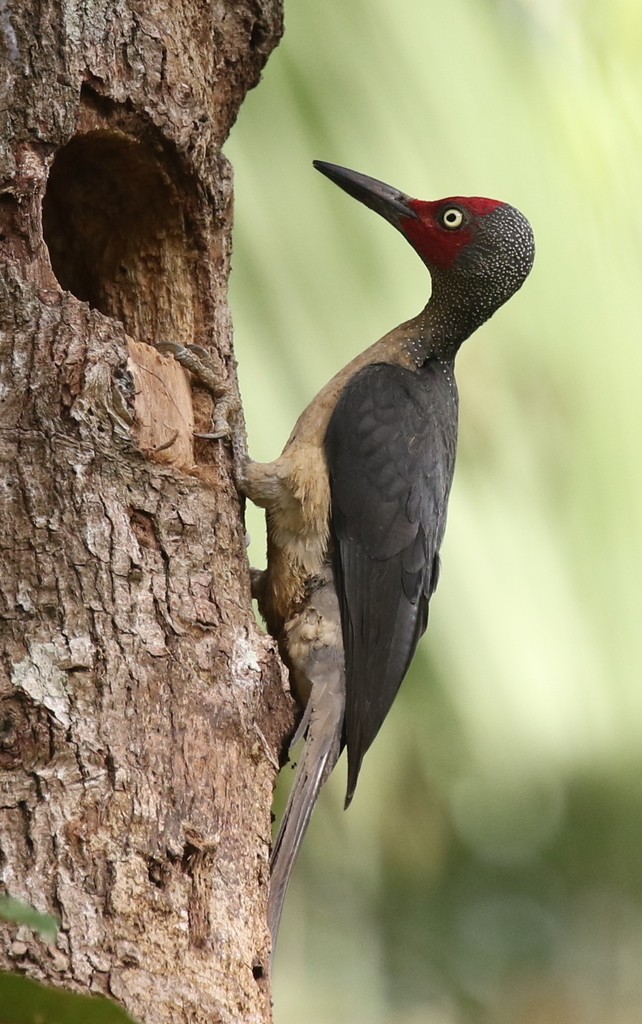Ashy Woodpecker
A species of Large Asian Woodpeckers Scientific name : Mulleripicus fulvus Genus : Large Asian Woodpeckers
Ashy Woodpecker, A species of Large Asian Woodpeckers
Botanical name: Mulleripicus fulvus
Genus: Large Asian Woodpeckers
Content
Description General Info
 Photo By philbenstead , used under CC-BY-NC-4.0 /Cropped and compressed from original
Photo By philbenstead , used under CC-BY-NC-4.0 /Cropped and compressed from original Description
The ashy woodpecker (Mulleripicus fulvus) is a species of bird in the woodpecker family Picidae. It is endemic to Sulawesi and surrounding islands in Indonesia. There are two subspecies, the nominate race M. f. fulvus, which is found in northern Sulawesi, the islands of Lembeh and Manterawu, and the archipelagos of Togian and Banggai; and M. f. wallacei, from southern Sulawesi and the islands of Muna and Buton. The second subspecies is named for the collector and scientist Alfred Russel Wallace. Its natural habitats are tropical moist lowland forests and tropical moist montane forests. They prefer closed forest, but can be found in secondary forest and patches of forest in savannah. They are assumed to be non-migratory, and can be found from sea level to 2,000 m (6,600 ft).The species is not uncommon and is considered secure for now. The ashy woodpecker is a large woodpecker, 40 cm (16 in) in length. The male has a red face to the mid-crown, and the back of the head and neck are grey. The throat, front of the neck and belly are buff-coloured, and the rest of the back and wings are grey-brown to dark slate grey. The long bill is black, and the iris of the eye yellow; the eye is surrounded by a grey eye-ring. The female is like the male but the head is entirely grey, faintly spotted except for the forehead. M. f. wallacei resembles the nominate subspecies, but the red on the face encompasses most of the head. It also has a slightly longer tail and wings, but a slightly shorter bill. The calls include laughing calls of hew-hew-hew-hew-hew and tuk tuk tuk, but these are muffled, not loud. They also drum during the breeding season. Ashy woodpeckers predominately feed on trees, but may also break into termite nests on the ground. In trees, they are often seen on trunks. They feed on termites, caterpillars and other insects and arthropods. Little is known about their nesting; one pair was observed digging a nest hole, with the male doing most of the work. Nesting holes are found in dead trees or in the dead sections of living trees. Two to three eggs are laid. 
Size
40 cm
Nest Placement
Cavity
Feeding Habits
Ashy Woodpecker predominantly consumes termites and caterpillars, alongside other arthropods. Commonly spotted foraging on tree trunks, ashy Woodpecker may forage on the ground, particularly at termite mounds, and typically feeds in pairs or small family groups.
Habitat
The ashy Woodpecker primarily resides in both primary and secondary forests, showing a preference for dense, closed canopy areas. It is also a regular inhabitant of forest patches within savanna landscapes. Typically, this species avoids proximity to human settlements, thriving best in undisturbed natural environments across broad geographical regions where such habitats occur.
Dite type
Insectivorous
General Info
Feeding Habits
Bird food type
Scientific Classification
Phylum
Chordates Class
Birds Family
Woodpeckers Genus
Large Asian Woodpeckers Species
Ashy Woodpecker